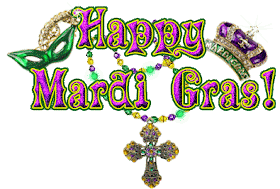 Last week to help celebrate National Potato Chip Day we took the kids to the Herr's Potato Factory. The kids were able to learn how potato chips were made and packaged before being shipped out to the stores. We were surprised that they were also making pretzels and corn chips this day as well. During the tour, our tour guide disappeared for a few minutes and returned with a tray of freshly made potato chips for us to try. The really exciting part of this was that the chips were still warm! None of us have ever tasted anything like it. The kids got to see how the chips were seasoned, divided for packaging and even labeled. Most of the work is done by computers but there are workers standing by monitoring the process.
Last week to help celebrate National Potato Chip Day we took the kids to the Herr's Potato Factory. The kids were able to learn how potato chips were made and packaged before being shipped out to the stores. We were surprised that they were also making pretzels and corn chips this day as well. During the tour, our tour guide disappeared for a few minutes and returned with a tray of freshly made potato chips for us to try. The really exciting part of this was that the chips were still warm! None of us have ever tasted anything like it. The kids got to see how the chips were seasoned, divided for packaging and even labeled. Most of the work is done by computers but there are workers standing by monitoring the process.The kids got to learn that each truck load of potatoes is placed on a hydrologic lift and then the potatoes are rolled off the back of the truck into the basement section of the assembly plant. We also were informed that a computer can hand pick and immediately toss out any potato slices that have green or brown on them. Our tour guide told us that the green on potatoes meant they received too much sun while growing in the ground and the brown colored means they had too much sugar and got caramelized during their cooking process. Someone on the tour asked “what happens to the chips that fall on the floor during the process?” and our tour guide told us that the Herr’s family actually has Angus Cows on the farm and they feed them to the cows. I guess even the cows in Nottingham get to have their afternoon snack too.
After the tour was over we had a simple but yummy lunch in their lunch room. We then got back in our cars and drove a little more south to the Conowingo Hydroelectric Plant and Dam. Unfortunately, the plant is now closed for public tours. We were able to take a nature walk along the river. We posed for pictures with the Dam and the very fast moving water in the background. We also witnessed a spectacular surprise – a Bald Eagle soaring above us! We watched as the parents took turns leaving and protecting the nest.
We all had a great time and thoroughly enjoyed our day!
Kids favorites for today ……..
Lauren "I LOVED the potato chips"
Matthew "Eating the fresh new potato chips was totally AWESOME"
Our hike:
During our hike around the dam we were on the watch for what was around. We studied the ecosystems within the biomes. They were full of many interesting things. First there was a great deal of wonderful mushroom specimens and other fungus. We admired the bright green moss covered on some trees and rocks. The kids especially liked finding tadpole eggs in a very large water puddle along the path.
Lying all over the ground we found coarse woody material or fallen dead wood pieces. If you have grade school children you’re probably already aware that they serve as carbon holders which is vital to our ecosystems and forests. These provide places for seeds to grow as well as natural mulch for the earth. Add that with all the fungi which would keep moisture and you have a happy little ecosystem.
What is a Biome?
A biome is a large area with similar flora, fauna, and microorganisms. Most of us are familiar with the tropical rainforests, tundra in the arctic regions, and the evergreen trees in the coniferous forests. Each of these large communities contain species that are adapted to its varying conditions of water, heat, and soil. For instance, polar bears thrive in the arctic while cactus plants have a thick skin to help preserve water in the hot desert. To learn more about each of the major biomes, click on the appropriate heading to the right.
What is an Ecosystem?
Most of us are confused when it comes to the words ecosystem and biome. What's the difference? There is a slight difference between the two words. An ecosystem is much smaller than a biome. Conversely, a biome can be thought of many similar ecosystems throughout the world grouped together. An ecosystem can be as large as the Sahara Desert, or as small as a puddle or vernal pool.
Ecosystems are dynamic interactions between plants, animals, and microorganisms and their environment working together as a functional unit. Ecosystems will fail if they do not remain in balance. No community can carry more organisms than its food, water, and shelter can accommodate. Food and territory are often balanced by natural phenomena such as fire, disease, and the number of predators. Each organism has its own niche, or role, to play.









































